Timber Frames
“The loss of timber framing as the dominant building system in this country was simultaneous with the loss of the human element in almost everything”
~ Tedd Benson, Building The Timber Frame House
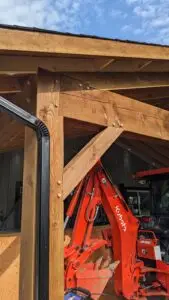
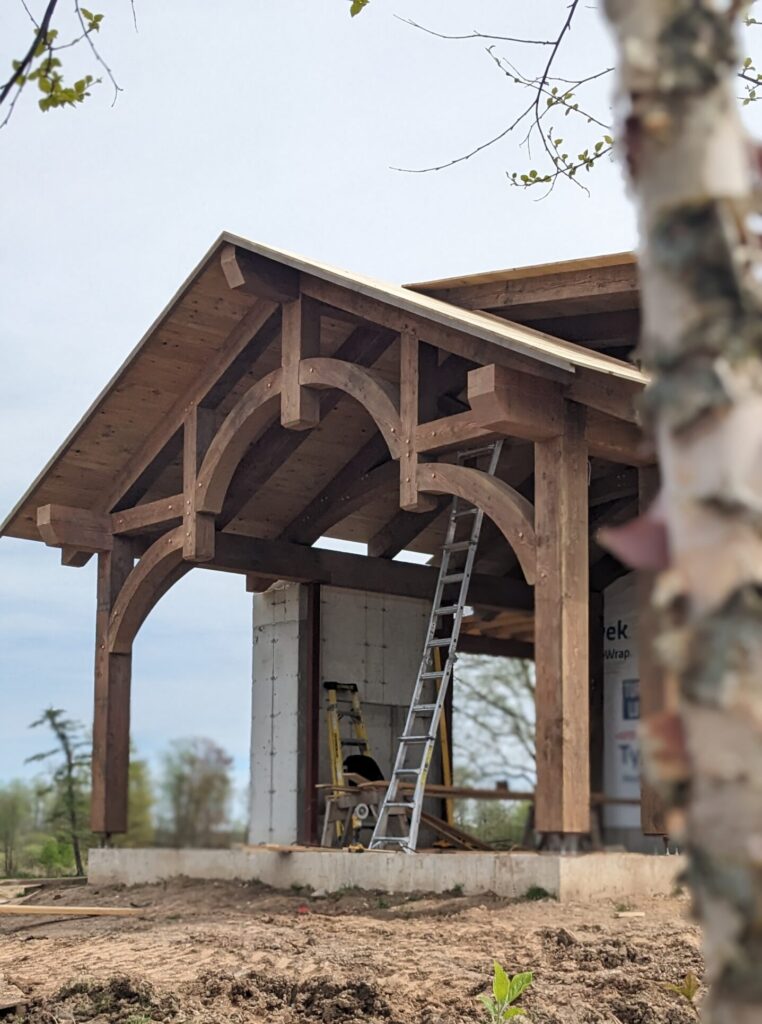
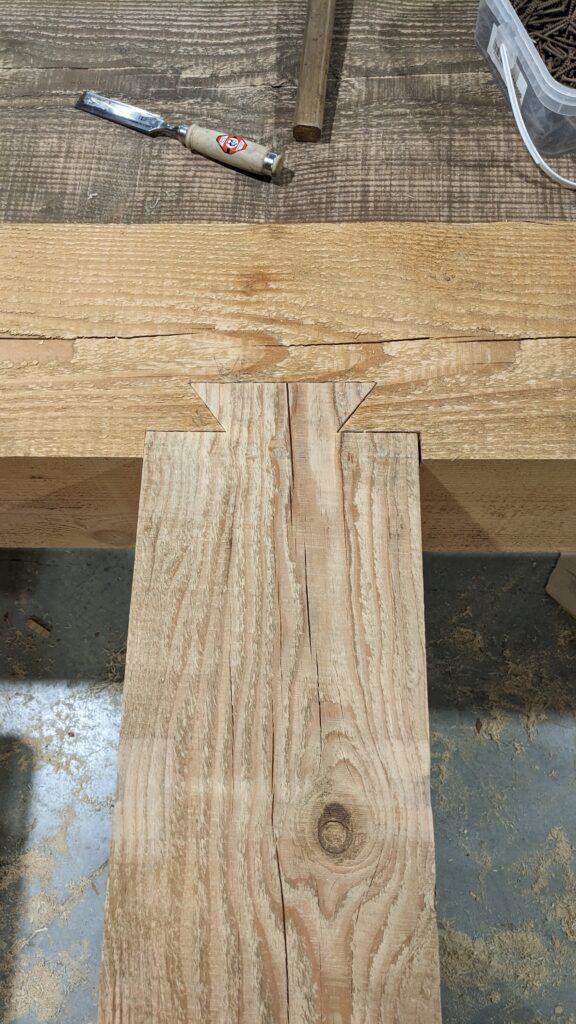
Featured Project:
Timber Addition – Orangeville
Features:
– 24×18 Timber frame
– Authentic joinery
– Conventional roof
~$22,000+
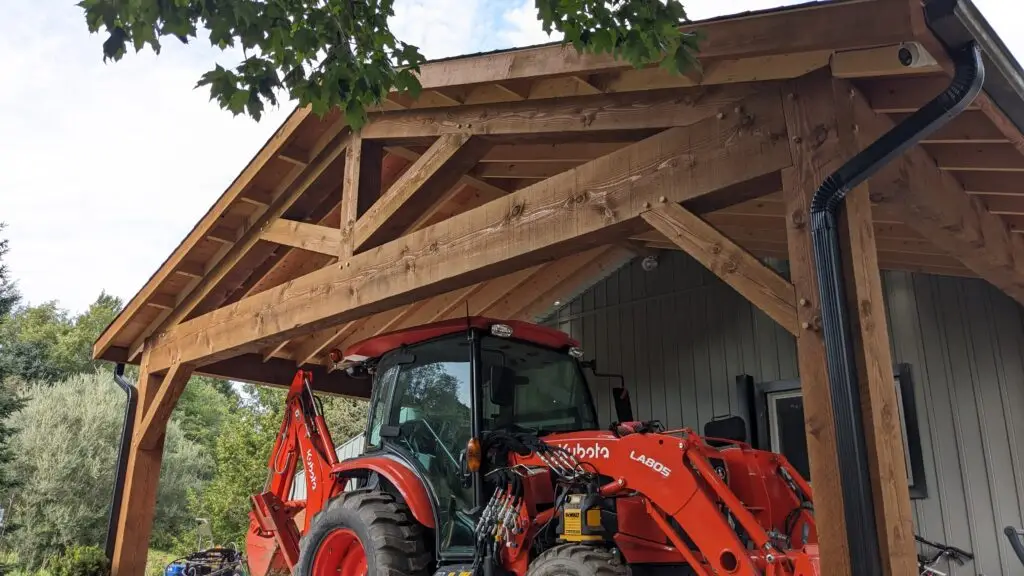
Timber framing is a traditional construction method that utilizes large wooden beams and posts connected with meticulous carved joinery. It has been used for centuries in the construction of houses, barns, and other structures, they are known for their durability, strength, and aesthetic appeal. Here’s an overview of timber framing:
-
Structural elements: Timber frames consist of vertical posts (known as uprights or columns) and horizontal beams (known as girts and purlins) that form the primary load-bearing structure of the building. Additional beams, such as tie beams and collar ties, may be included to provide further support and stability.
-
Joinery: Joinery techniques are crucial in timber framing, as they involve the connection of beams and posts without the use of metal fasteners like nails or screws. Traditional joinery methods include mortise and tenon joints, where a projecting piece (tenon) on one timber fits into a corresponding slot (mortise) in another timber. Other common joints include dovetails, half-lap joints, and scarf joints.
-
Pegging: Once the joints are fitted together, wooden pegs (also known as treenails) are inserted through holes drilled in the joint. The pegs help secure the joint and add strength to the connection. They are often left exposed, adding to the aesthetic charm of the timber frame.
-
Load distribution: Timber frames distribute the weight of the structure evenly through the vertical posts and horizontal beams. This allows for large open spaces within the building, as the weight is carried down to the foundation without the need for interior load-bearing walls.
-
Design flexibility: Timber frames offer design flexibility, as the large beams and open spaces allow for creative architectural features and customization. The exposed wooden beams create a distinctive interior aesthetic and can be left exposed or covered with finishes based on personal preference.
-
Energy efficiency: Timber frames can provide excellent thermal performance when combined with modern insulation materials. The thick timber walls offer natural insulation properties and can help regulate temperature and reduce energy consumption.
-
Sustainability: Wood is a renewable resource, and timber framing can be an environmentally friendly construction method. When sourced from responsibly managed forests and coupled with sustainable building practices, timber frames can contribute to a lower carbon footprint.
-
Historical significance: Timber framing has a rich historical and cultural significance, especially in regions where it has been used for centuries. Many traditional timber frame structures still exist today and are appreciated for their craftsmanship and heritage value.
Modern timber frames can also incorporate hybrid construction techniques, combining timber framing with other building systems such as steel or concrete, to meet specific design and engineering requirements.
Timber framing continues to be used in contemporary construction, blending aesthetics, sustainability, and structural integrity.
Kits:
Pavilions:
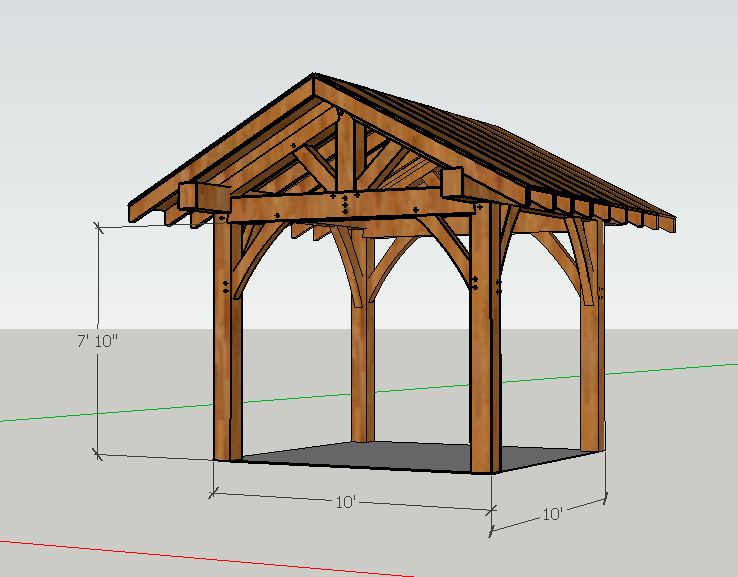
10‘ x 10′ Timber Frame Pavillion
- Eastern White Pine
- Custom Stain (Sansin SDF)
- Exposed rafters and roofboards
- Installed (within 30km)
- Add: Footings and roofboards ($4,000)
– $24,000 +hst
Tiny Home:

Timber Gable:
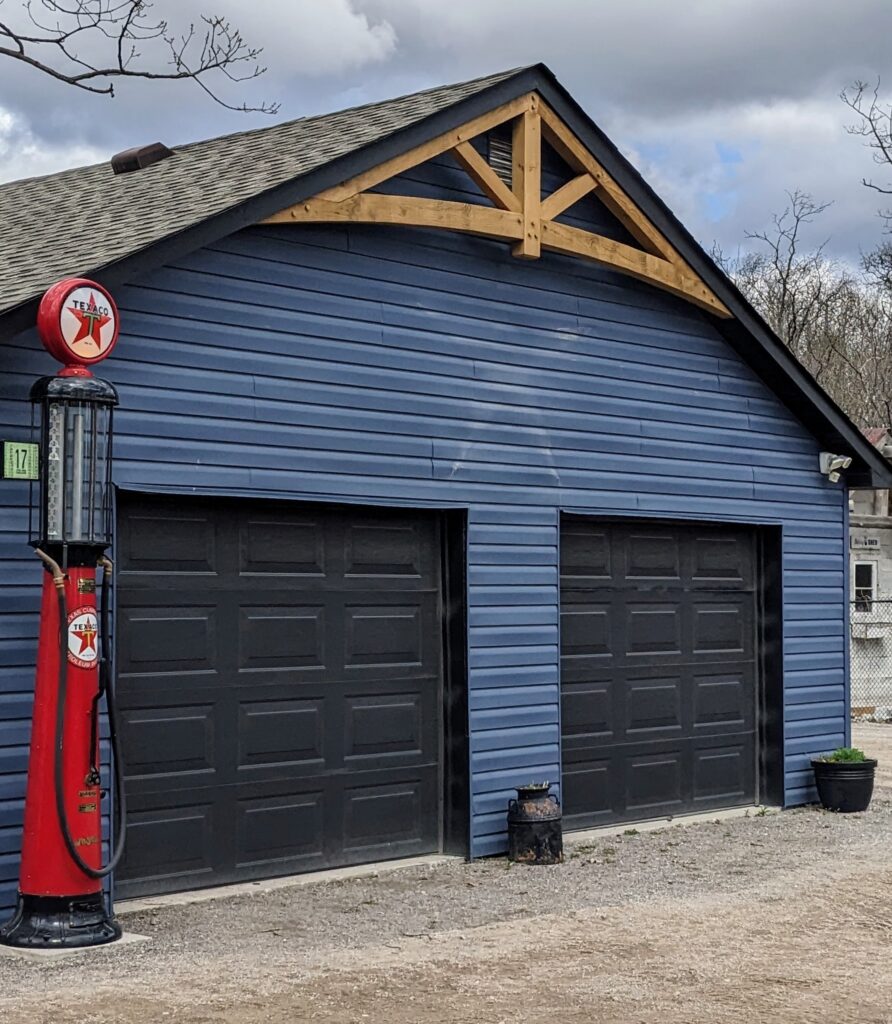
Curved Timber Truss
- On-site measured for proper roof fitting
- Colour choice selected buy customer